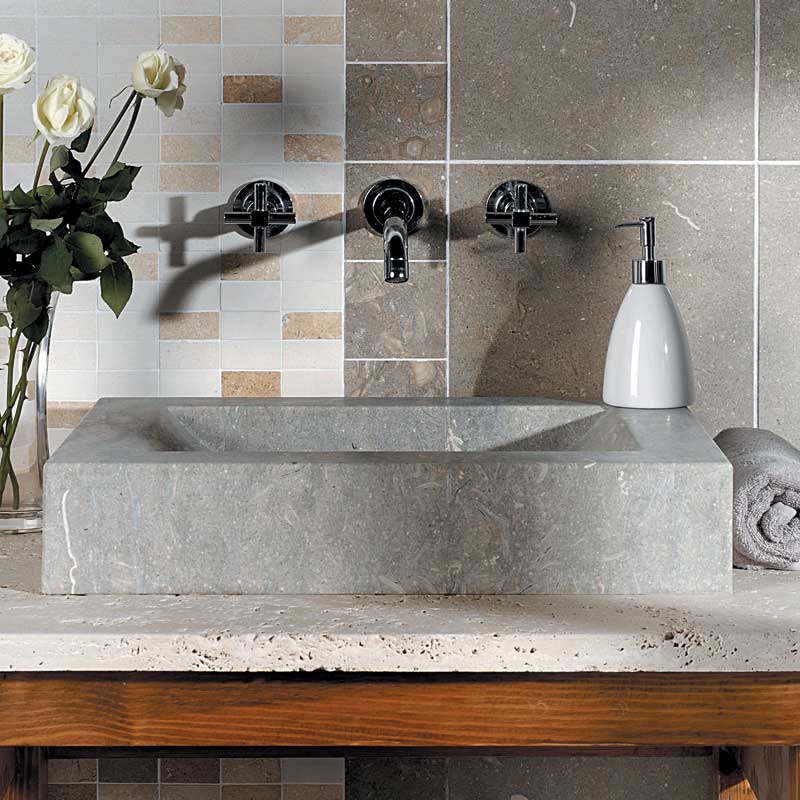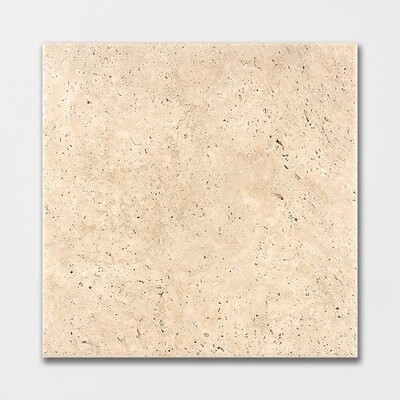
Travertine or Limestone: Which is Better?
Travertine or Limestone: Which is better? Architects, designers, builders, and homeowners ask this question all the time. The answer is a bit more complicated than it appears at first glance. You eventually come to realize that answering this is an “art” as much as it is a “science.” You have to decide between these two materials. So let’s dive in.
The geology is simple. Both stones are sedimentary rocks. Travertine is in fact a type of limestone! Science aside, both materials are typically light in color and have been used for centuries. Limestone is usually more uniform in physical characteristics. Travertine can oftentimes present with voids or holes that may or may not have been filled. Both are usually polished or honed but react slightly differently to each process.

In terms of the durability and maintenance of each, it would be simple to say limestone is better since it is usually denser. But this is where the “art vs. science” comes in. The real question is, what are the expectations of the end-user? The issue must be resolved on a case by case basis since there is no “cheat sheet” to check out that gives you a cool “if/then” performance guide. This is where professional help is most important. The needs of the project must be weighed in total to determine the stone to be used.
StoneTileDepot.com is a direct factory store that provides wholesale and retail store services for natural stone, man-made stone, and tile. So why not talk to an expert? Contact us now and let us help you answer the question, limestone, or travertine!
Is travertine and limestone the same thing?
Although similar, they are completely different types of natural stones. Limestone is a sedimentary rock and Travertine forms around river beds and hot water springs. Travertine is harder and has some holes. These holes should be filled for interior floor tile applications. For exterior wall cladding or exterior stone pavers, you can leave them unfilled. This creates a more natural feel. Whereas limestone flooring is more warm and neutral. Limestone flooring comes in pattern tiles or regular straight tiles.

In general, limestone, particularly French limestones, are more expensive compared to travertines. However, the grade and quality of it make a big difference. In particular, Travertine has many different grades of it. Factors such as the number of natural holes, size of the holes, and quality of the fill make a difference in price. Tiles with more holes and bigger holes are cheaper. For a particular limestone quarry where it comes are a big factor and the selection of the stone.
https://www.stonetiledepot.com/create-a-sanctuary-in-your-bathroom-with-pebble-tile/
Is limestone good for paving?
In general, limestone is not good for paving. It is a softer stone, and it may wear faster in applications where there is a lot of use. Furthermore, it is more absorbent, and areas like driveways may not be suitable for limestone paving, whereas travertine pavers are ideal for any application. Travertine pavers are very abundant in supply and very economical in price. Installing pavers is more manageable, and for that reason, the cost is not a significant factor when you are choosing between the two types of materials.
What are the two main types of limestone?
French quarries are the most popular type. Beaumaniere, Ampily, and Magny are some of the well known French quarries. Portugal also has many quarries and good quality.
Turkish limestone quarries, like the Limra area also provide a huge supply of stone. These quarries are very uniform and one of the easiest to use in interior flooring. Many architects and designers prefer a very neutral stone and this is one of the best examples.
